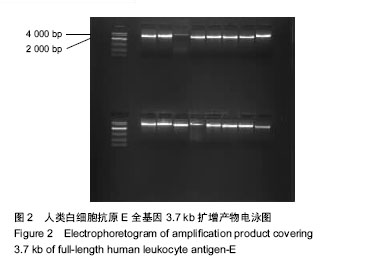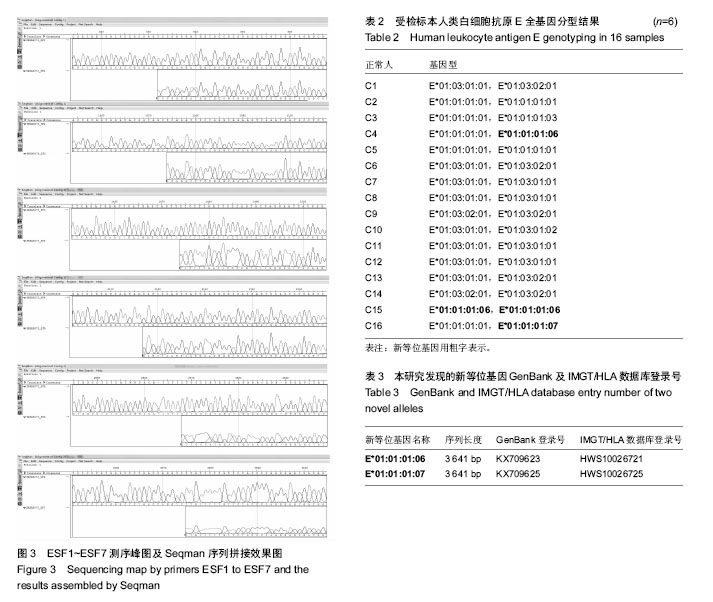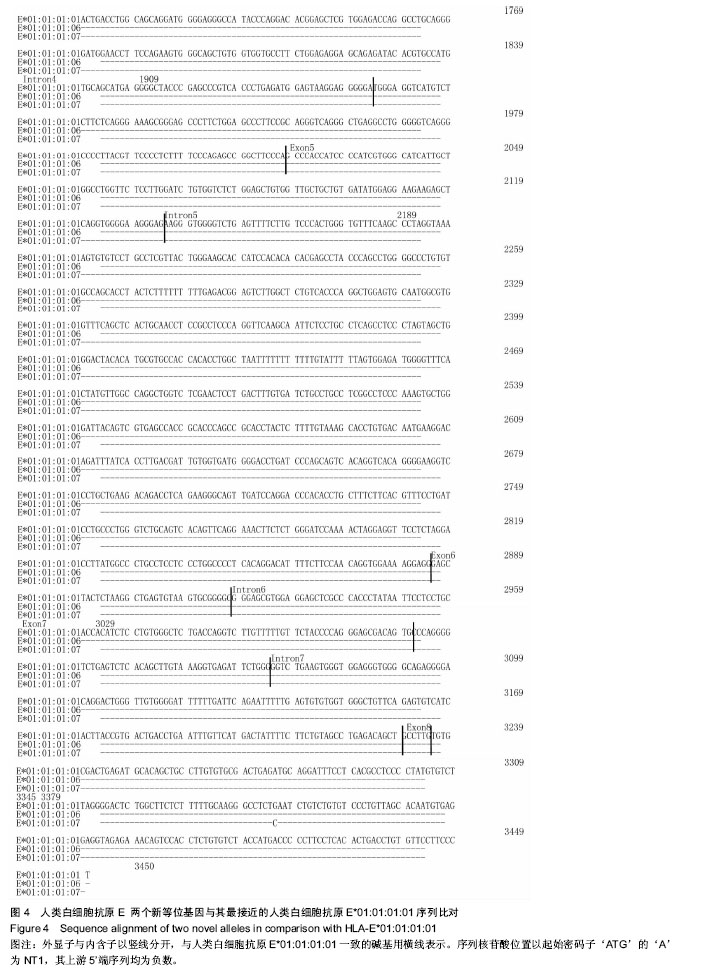| [1] Mizuno S, Trapani JA, Koller BH,et al.Isolation and nucleotide sequence of a cDNA clone encoding a novel HLA class Ⅰ gene. J Immunol.1988;140(11): 4024-4030.[2] Robinson J, Halliwell JA, Hayhurst JH, et al.The IPD and IPD-IMGT/HLA Database: allele variant databases. Tissue Antigens. 2015;43: D423-31.[3] 赵亮,范丽安,杨钰琴,等.上海地区汉族群体HLA-E基因多态性分析[J].中华医学遗传学杂志,2001,18(6):444-447.[4] 甄子俊,方建培,邓庆丽,等.广东地区汉族正常人群HLA-E基因多态性研究[J].中国实验血液学杂志, 2004, 12(6):783-787.[5] Iwaszko M,Bogunia-Kubik K.The role ofHLA-Epolymorphism in immunological response. PostepyHig Med Dosw. 2011;65: 616-626.[6] 徐筠娉,何柳媚,李桢,等.中国汉族个体HLA-I类基因全长序列鉴定及多态性比较[J].中国输血杂志,2015,28(3):243-251.[7] Xu YP, Deng ZH, O’hUigin C, et al. Characterization and polymorphic analysis of 4.5 kb genomic full-length HLA-C in Chinese Han population. Tissue Antigens. 2011; 78(2): 102-114.[8] Xu YP, Li Z, Zou HY, et al.Two novelHLA-A alleles, A*29:02:01:02 and A*68:01:01:02, were identified by genomic full-length cloning and sequencing.Tissue Antigens.2012; 79(1):72-74.[9] Thompson JD, Gibson TJ, Plewniak F, et al. The CLUSTAL_X windows interface: flexible strategies for multiple sequences alignment aided by quality analysis tools. Nucleic Acids Res. 1997;25(24):4876-4882.[10] Marsh SG, Albert ED, Bodmer WF et al.Nomenclature for factors of the HLA system,2010. Tissue antigens. 2010;75: 291-455.[11] 王大明,邹红岩,聂冬梅,等. 造血干细胞移植志愿捐献者罕见基因人类白细胞抗原C*08:99的测序分析[J].中国组织工程研究, 2016, 20 (1): 102-106.[12] 鞠瑞青,陈琳,林乾飞,等.HLA新等位基因HLA-B*5145的确认[J].中国组织工程究, 2010, 14(44):8249-8252.[13] 程四国,张伯伟.HLA新等位基因A*9217家系调查分析[J].中国组织工程研究,2009, 13(53):10537-10540.[14] Van den Elsen PJ,Gobin SJ,Van Eggermond MC,et al. Regulation of MHC class I and II gene transcription: differences and similarities.Immunogenetics.1998; 48(3): 208-221.[15] Snyder SR,Waring JF,Zhu SZ,et al.A 3'-transcribed region of the HLA-A2 gene mediates posttranscriptional stimulation by IFN-gamma.J Immunol.2001;166(6):3966-3974.[16] Kulkarni S, Savan R, Qi Y, et al. Differential microRNA regulation of HLA-C expression and its association with HIV control. Nature. 472: 495-498, 2011.[17] Manaster I, Goldman-Wohl D, Greenfield C,et al. MiRNA-mediated control of HLA-G expression and function. PLoS One. 2012; 7(3):e33395.[18] O'hUigin C, Kulkarni S, Xu YP,et al.The molecular origin and consequences of escape from miRNA regulation by HLA-C alleles. Amer J Hum Genet.2011;89 (3):424-431. |
.jpg)




.jpg)
.jpg)